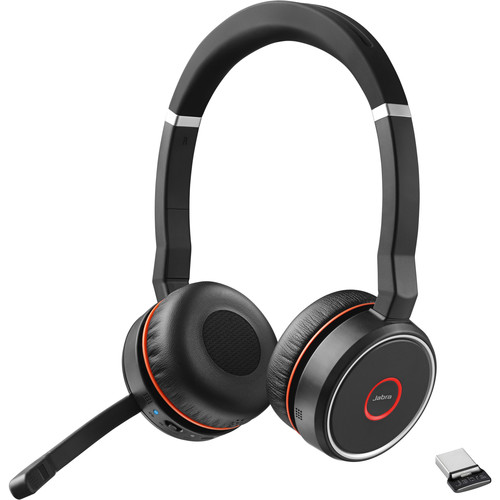Plantronics’ Past– to the Moon and Back
Plantronics began from the dreams of two men who had a vision for a better future. It was a discussion between two pilots whose dream was to create a lightweight headset. A few years later that dream was realized as a Plantronics headset landed on the moon to transmit the legendary words of Neil Armstrong as he walked on the moon. These words continue to symbolize the future of Plantronics.
Plantronics founders Keith Larkin and Courtney Graham saw their vision go from California to the moon in a few short years. Larkin first saw a set of radio spectacles in 1961 and, at the same time, United Airlines wanted to replace the handheld microphones used in the cockpits of their DC-8 jets. The radio spectacles gave him ideas. He began designing a lightweight headset which he later patented.
Plantronics Incorporated was formed on May 18, 1961 with the mission to research, design and manufacture specialized aircraft electronics. And they achieved this right from the start when United Airlines bought their first headset, the MS50. This set the aviation’s standard for the future of lightweight communications.
This was an auspicious beginning for the fledgling company that set their future on the right path right from the beginning. For more than 40 years, Plantronics has kept abreast of the latest technology to continue delivering the very best to their customers.
An Accident sent them to the Moon
It was a freak accident that set Plantronics on its flight to the moon. In 1962, the NASA program was still fairly new. In the second manned Mercury mission, Gus Grissomost his communications set when he had to get out of the capsule prematurely when the hatch detonated. The capsule sank to the bottom of 15,000 feet of water.
It was then NASA realized they needed a lightweight emergency communications system on hand. They looked for the answer and contacted the ITT Laboratories for a solution. A new system arrived and as a part of that system was the Plantronics MS50 headset. Astronaut Wally Schirra saw it and wanted to use it on his next Mercury mission. He contacted Plantronics and asked if they could fit the headset into his helmet as his main communication set. And that is how Plantronics landed their first headset design on the moon.
On October 3, Schirra wore the first ever Plantronics headset into space. He orbited Earth a total of six times before returning from his flight. With such a high involvement with the space industry, Plantronics created a new division: SPENCOM – SPace ENvironmental Communications. SPENCOM was dedicated to the manufacture of headsets for astronauts and the space program. Plantronics was named as a NASA supplier – an honor given to very few manufacturers.
So from humble beginnings to landing on the moon and coming back to Earth again – it has spent 40 years designing the very best communications products made in the world today. The history of the flight to the moon set Plantronics onto the path for the future.
Where to Next?
Breaking into the space race was a fantastic beginning for Plantronics – but what was the next step? By 1962, the Federal Aviation Agency (FAA) was looking for proposals for lightweight headsets for their traffic controllers. The MS50 was popular among its users and Plantronics won the bid to supply all FAA air traffic controllers as the only supplier of headsets. Plantronics still holds that privilege today.
Not long after another opportunity arose. This truly cemented Plantronics’ future as world leaders in designing and manufacturing lightweight headset solutions. First Pacific Bell, and soon after Western Electric, commissioned Plantronics to supply lightweight headsets to all their telephone operators across America.
Plantronics headsets rose in popularity and they still worked with the space program to create more advanced communications for the NASA. All the astronauts on manned Gemini missions used Plantronics headsets. All the while Plantronics was looking into the future and developing different types of headsets for use in the space program.
You can Plantronics from the Moon
These earlier flights were lead ups to test out the technology for the ultimate journey, the flight to the moon. Apollo missions 8 and 10 were successful in orbiting the moon.
Now it was time to actually aim for the moon – a critical mission that had only Plantronics headsets as their communications. This was the only way astronauts could communicate with Earth. And Plantronics did not let them down and was part of making history.
On July 20, 1969, people and children at schools from across the world gathered in front of televisions to watch Neil Armstrong step from Lunar Module Eagle 1. He wore a Plantronics headset when he said – That’s one small step for man, one giant leap for mankind.
It was a Plantronics headset that again conveyed some very famous words during the Apollo 13 mission – Houston, we have a problem.
Moving into the Future
Plantronics stories of flying to the moon certainly set the standard for the future of the company. And today Plantronics still follow that quest for excellence and innovation in everything they do. Plantronics leads the way with ground breaking wireless technology – creating communications freedom for the masses. Plantronics keep crossing the boudaries no-one has crossed before. check the the newest wireless headset from Plantronics.








